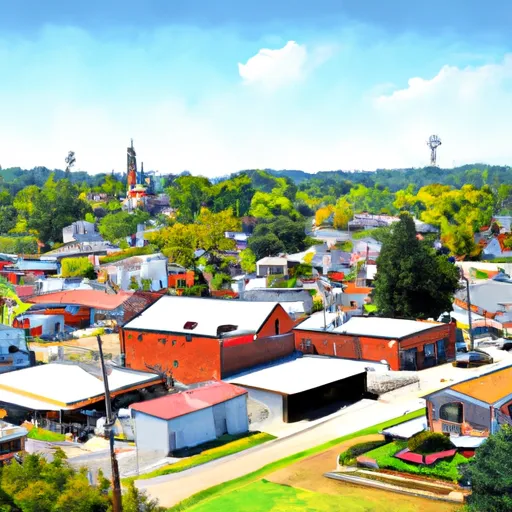°F
°F
mph
Windspeed
%
Humidity











Salineville is a small village located in Columbiana County, Ohio. It experiences a humid continental climate, characterized by warm summers and cold winters. Average temperatures range from around 24°F (-4°C) in winter to 84°F (29°C) in summer. Precipitation is evenly spread throughout the year, with an average annual rainfall of 39 inches (99 cm) and approximately 24 inches (61 cm) of snowfall.
The village is in proximity to the Little Beaver Creek, a prominent water body in the region. This pristine creek flows through the nearby Little Beaver State Scenic River, providing excellent hydrological opportunities for fishing, canoeing, and kayaking. The river is also home to a diverse range of aquatic flora and fauna.
Outdoor recreation enthusiasts can explore the surrounding area, which offers various activities. The Beaver Creek State Park is nearby, offering opportunities for hiking, camping, picnicking, and boating. The park also features historic landmarks, such as the Gaston's Mill and the Pioneer Village.
In summary, Salineville, Ohio, boasts a humid continental climate with distinct seasons and ample outdoor recreation opportunities. With its proximity to the Little Beaver Creek and nearby state parks, residents and visitors can enjoy a variety of activities in a beautiful natural setting.
Weather Forecast
Salineville receives approximately 1012mm of rain per year, with humidity levels near 81% and air temperatures averaging around 10°C. Salineville has a plant hardyness factor of 6, meaning plants and agriculture in this region thrive during a short period during spring and early summer. Most plants will die off during the colder winter months.
Regional Streamflow Levels
5
Cubic Feet Per Second
24
Cubic Feet Per Second
24
Cubic Feet Per Second
14
Cubic Feet Per Second
Nearby Camping
| Camping Area | Reservations | Toilets | Showers |
|---|---|---|---|
| Mill Creek - Berlin Reservoir | |||
| Village Green | |||
| Guilford Lake State Park | |||
| Geneva State Park | |||
| Jefferson Lake State Park | |||
| Mosquito Lake State Park |



